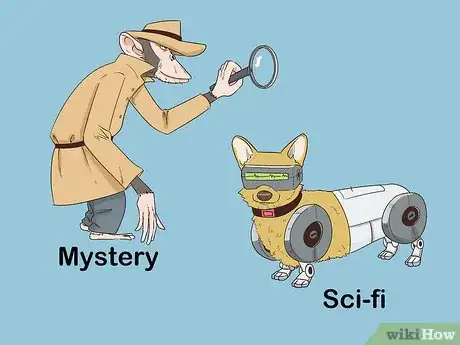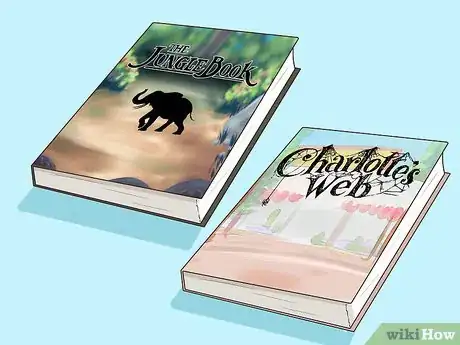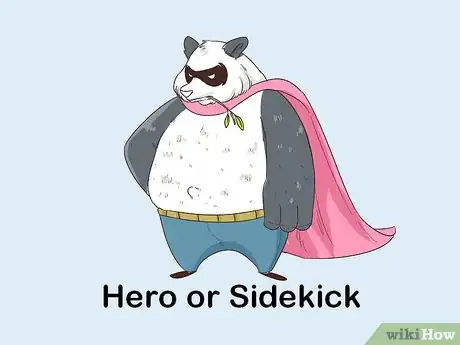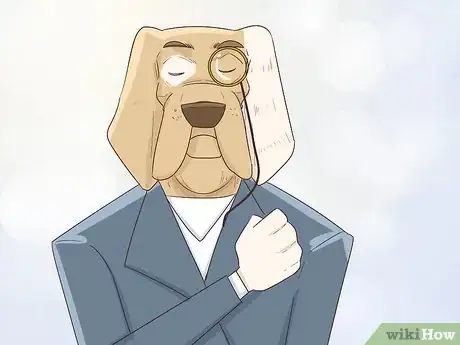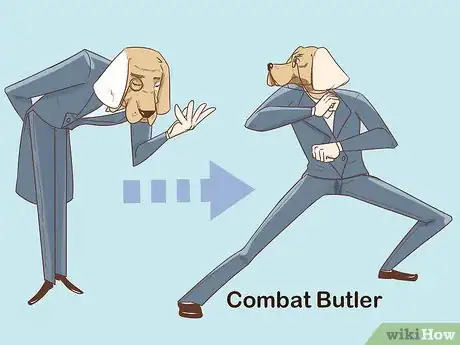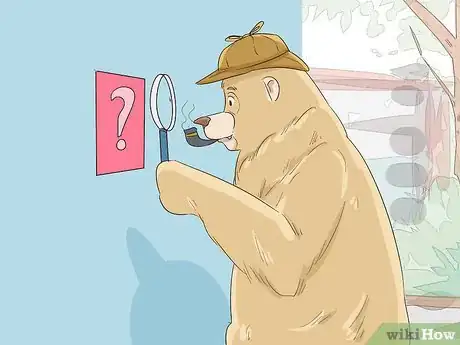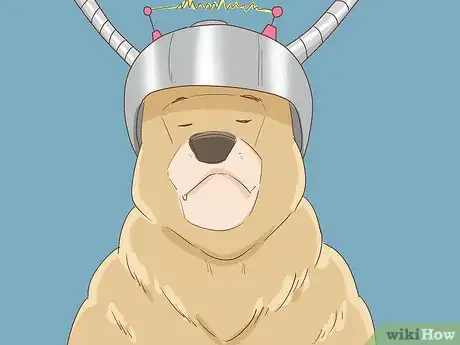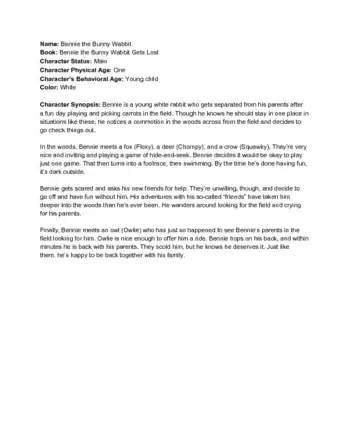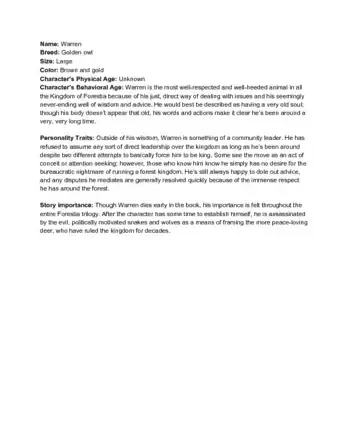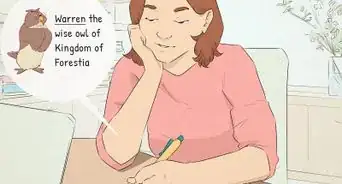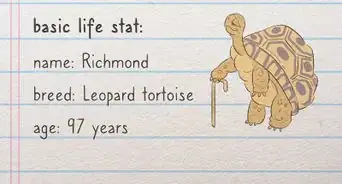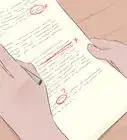This article was co-authored by Lucy V. Hay. Lucy V. Hay is a Professional Writer based in London, England. With over 20 years of industry experience, Lucy is an author, script editor, and award-winning blogger who helps other writers through writing workshops, courses, and her blog Bang2Write. Lucy is the producer of two British thrillers, and Bang2Write has appeared in the Top 100 round-ups for Writer’s Digest & The Write Life and is a UK Blog Awards Finalist and Feedspot’s #1 Screenwriting blog in the UK. She received a B.A. in Scriptwriting for Film & Television from Bournemouth University.
This article has been viewed 60,513 times.
We all know a great animal character when we see one (Simba, Scooby Doo, the Cheshire Cat, Patrick Star, and so many more), but what is it about them that makes them so enjoyable and at times even relatable? It really comes down to how they were written. Great animal characters are great because they have interesting personalities, unique quirks, and real motivations, just like human characters do! This article will show you how to think up and flesh out an animal character for your story who has all of those things. Check out the steps below to get started!
Steps
Getting Started
-
1Consider the genre. Knowing what genre your book fits into, be it science fiction, mystery, drama, etc., is an important consideration when creating an animal character for your story. Although characters don't have to fit the exact mold of that genre, it may seem misplaced or odd if, for example, your animal is a fish who lives in outer space.
- Brainstorm what special characteristics your character may have, based on the genre. For example, if the story is science fiction with a lot of fight scenes, your animal should have paws in order to hold their weapon. A snake would, therefore, not be a sensible choice, but a dog or a cat could work well.
- For historical fiction you may even want to research the types of animals, which were popular or present during that time. If you are writing about the Jurassic Period, a dinosaur may make sense, but if your story is set in the future, suddenly, T-Rex seems out of place, unless of course you have a time-traveling dinosaur!
-
2Understand your audience. As important as it is to consider the genre of your story, it's equally important to understand the audience. What may work for one audience, say adults, may not be appropriate for others, such as children.
- Your audience should play a role in determining potential designs and details. Keep it fairly simple for children. You don't need to feature a character who is super nuanced unless you're appealing to an adult audience as well.[1]
Advertisement -
3Read other stories featuring animal characters. While you never want to copy or plagiarize the work of others, it can be helpful to read the work of others and try to think about whether or not that character works.[2] This will ultimately help you when creating your character.
- Try stories like The Jungle Book, Watership Down, Charlotte's Web, The Tale of Despereaux, The Chronicles of Narnia series, Bunnicula, or your favorite story featuring animals.
- When reading the story, ask yourself: Does this character work? Do they seem real to me? Why or why not?
-
4Determine the role of your character. Whether your animal character will be the hero or the sidekick, it's important to determine their role in your story. In doing so, you'll be able to better define and shape the animal moving forward.
- Think of the characteristics which define an animal in this particular role. For example, if they are the sidekick, but are always saving the day for the hero, think of how this will shape their persona.
- Consider whether your animal character will be living amongst other animals (Warrior Cats, for example) or if they will be working alongside humans (think, Black Beauty). If, for example, your character is living independent of humans, they may be able to walk and talk and take on other human-like characteristics. However, if they exist in a human's world, their role would differ dramatically, as they may still have animal characteristics and wouldn't be able to talk or wear clothes, unless they are Stuart Little!
Creating a Persona
-
1Choose a look. Based on everything you determined in the previous steps, it's now time to have some fun and choose how your character should look. How will you describe your character? Consider everything from the color of the character, to their clothes and accessories.[3]
- Accessories should be an important consideration.[4] Is your character well-read? Maybe he has reading glasses or a monocle.
- Gender and height are just another dynamic in creating a look. Consider taking a normally small creature and making them big.
-
2Consider the character's personality. Thinking back to the role of the character, consider how that would affect their personality. Is your character's personality larger than life because they are the hero? Are they the shy, but inwardly brave sidekick?
- Write down words that describe your character's personality. This will come in handy when introducing them to your audience, but could also be incorporated into their name.
- Try choosing personality traits that are commonly associated with that type of animal. For example, you could make your cat character aloof and independent since cats are typically like that.[5]
-
3Determine unique qualities. What makes your animal character special? Do they have certain qualities, which help to shape who they are? For example, your character may be able to read minds or fly. Perhaps they are a math whiz or a scientific genius.
- Be creative, but consider how their unique qualities tie in with everything else you've already determined.
- Don't fall into stereotypes, as that only produces boring characters.[6] It's up to you to break the mold and to give your character qualities that will set him/her apart.
Bringing It to Life
-
1Name your character. Now that it's time to bring your character to life, start by giving them a name. They are, after all, a unique being with their own personality, look, and qualities. Shouldn't they have an equally awesome name?
- Consider using their unique qualities when choosing a name (think, Black Beauty).
- Speaking of Black Beauty, alliteration can be a strong tool when naming your character. Many iconic characters in the cartoon world such as Mickey Mouse, Daffy Duck, etc., have made good use of alliteration. It's less common in literature.
-
2Define the character's goals and dreams. Part of bringing your character to life, entails giving them a future or something to work towards. In Animal Farm Napoleon the pig originally has a goal of a better life for all the animals, his true personality shows as his goals change. Character's goals can shape his personality,[7] so don't miss this important step.
-
3Give them a history. Similar to their goals and dreams, a character should also have a past. This not only helps to define who they are today but gives the audience something to sympathize/empathize with.
- You don't have to dwell on the character's past. Bambi is a good example of this. Ultimately, his sad past helped to shape him into the confident and courageous leader that he became. However, his past wasn't necessarily the theme throughout.
- More than anything, the fictional characters that you create need to feel like real, living creatures to the readers.[8]
Community Q&A
-
QuestionHow can I not make it a Mary Sue/Gary Stu?
 Ashu PrakCommunity AnswerGive them flaws. Whether it's the fact they don't have powers, or they are extremely kind and trust everyone. It's your character and no one is judging you on it so you can do what you like.
Ashu PrakCommunity AnswerGive them flaws. Whether it's the fact they don't have powers, or they are extremely kind and trust everyone. It's your character and no one is judging you on it so you can do what you like. -
QuestionI want to make a story about survival, kind of like the "Warriors" series, but I don't want it to look like a rip-off. What can I do?
 Ashu PrakCommunity AnswerPerhaps, instead of cats, you could make the characters dogs, wolves, lions or rabbits. Maybe you could add imaginary creatures like dragons or phoenix into the story. Maybe the animal teams don't need a specific code or theme. Also, even if a warrior fan judges you, ignore them.
Ashu PrakCommunity AnswerPerhaps, instead of cats, you could make the characters dogs, wolves, lions or rabbits. Maybe you could add imaginary creatures like dragons or phoenix into the story. Maybe the animal teams don't need a specific code or theme. Also, even if a warrior fan judges you, ignore them. -
QuestionCan my character be or do anything?
 Community AnswerYes, it is your character and you can make him/her/it do and be anything you desire.
Community AnswerYes, it is your character and you can make him/her/it do and be anything you desire.
Sample Character Descriptions
References
- ↑ http://www.creativebloq.com/character-design/tips-5132643
- ↑ http://www.creativebloq.com/character-design/tips-5132643
- ↑ http://www.creativebloq.com/character-design/tips-5132643
- ↑ http://www.creativebloq.com/character-design/tips-5132643
- ↑ Lucy V. Hay. Professional Writer. Expert Interview. 16 July 2019.
- ↑ http://www.liferichpublishing.com/AuthorResources/Fiction/Five-Traps-and-Tips-for-Character-Development.aspx
- ↑ http://www.creativebloq.com/character-design/tips-5132643?page=1
- ↑ http://www.liferichpublishing.com/AuthorResources/Fiction/Five-Traps-and-Tips-for-Character-Development.aspx
